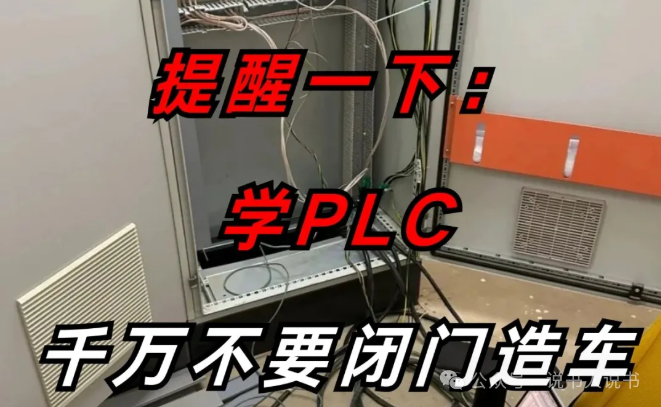
PLC Data Conversion: Data Format Conversion Technology to Solve Heterogeneous System Interaction Issues!
Introduction
Hello everyone! Today we are going to talk about a magical technology that allows different brands of PLCs to “shake hands”—data format conversion! In factory automation, have you ever encountered the awkward situation where Siemens PLC and Rockwell PLC “speak different languages”? Or the frustration of Mitsubishi PLC data being “unintelligible” to Omron PLC?Don’t worry! Mastering data conversion technology will enable these heterogeneous systems to communicate smoothly like old friends! Today, I will guide you through this technical challenge in the most relatable way!
Why is Data Conversion Necessary?
Imagine this:A manual written in Chinese by a Chinese engineer, and a German engineer directly comparing it with a German version of the equipment—resulting in a “chicken talking to a duck” situation! The same principle applies to data exchange between PLCs:
-
Data Type Differences: Some PLCs use “REAL” to represent floating-point numbers, while others use “FLOAT”.
-
Byte Order Differences: Big-endian vs Little-endian, just like some people write from left to right while others insist on writing from right to left.
-
Data Length Mismatch: The same 32-bit integer may be stored in two 16-bit registers by some PLCs.
Without data conversion technology, these systems are like diplomats with different language translators, unable to communicate effectively!
Common Data Format “Dialect” Comparison Table
| PLC Brand | Integer Format | Floating Point Format | Typical Byte Order |
|—————|—————-|—————|————–|
| Siemens S7 Series | INT/DINT | REAL | Big-endian |
| Rockwell ControlLogix | INT/LINT | FLOAT | Little-endian |
| Mitsubishi FX Series | DWORD | FLOAT32 | Big-endian |
| Omron NJ Series | INT/DINT | REAL | Little-endian |
Three Major Conversion Tools
1. Middleware Conversion (Like a Professional Translator)
OPC UA server is the most typical “data translator”! It can establish the following conversion process between different PLCs:
Siemens REAL → OPC UA Standardized Format → Rockwell FLOAT
Advantages:
-
Supports hot-swapping without affecting the existing system
-
Visual configuration interface, as simple as filling out an Excel spreadsheet
2. Custom Function Blocks (DIY Conversion Tool)
For example, using Siemens SCL language, we can write a byte swap function like this:
FUNCTION "SwapBytes" : Void
{ S7_Optimized_Access := 'TRUE' }
VAR_INPUT
sourceArray : Array[0..3] of Byte;
END_VAR
VAR_OUTPUT
destArray : Array[0..3] of Byte;
END_VAR
BEGIN
destArray[0] := sourceArray[3];
destArray[1] := sourceArray[2];
//...other byte swap logic
END_FUNCTION
This method is like making your own conversion adapter; it’s cost-effective but requires technical expertise!
3. Gateway Hardware (Physical Layer Translator)
For example, HMS communication gateways can achieve:
Mitsubishi FX Serial Data → Gateway Memory Reorganization → Siemens Profinet Output
Typical Application Scenarios:
-
Retrofitting old equipment while retaining the original PLC
-
Harsh environments requiring electrical isolation
Case Study: The “Data United Nations” in Automotive Welding Workshops
A certain automotive company’s production line includes:
-
Siemens robot controllers (Profinet network)
-
Yaskawa welding power supplies (EtherCAT protocol)
-
KUKA handling robots (DeviceNet protocol)
Through data conversion technology, we achieve:
-
Unified conversion of all equipment status data into OPC UA format
-
Displaying standardized data in the MES system
-
Automatically adapting different devices’ data formats when process parameters change
Results:
-
System integration time reduced by 70%
-
Error rate in data exchange reduced from 5% to 0.1%
-
Flexible replacement of different brand spare parts
Pitfall Guide
-
Test! Test! Test again! Pay special attention to boundary values:
-
Floating-point ±INF (infinity)
-
Integer overflow situations
-
Timestamp conversion across different time zones
Retain Original Data: Just like needing to refer to the original text during translation, it is recommended to keep data snapshots before and after conversion
Consider Performance Impact:
-
Software conversion will increase CPU load
-
Hardware gateways will introduce microsecond-level delays
Interactive Discussion
-
What has been the most challenging data format conflict you have encountered? How did you resolve it?
-
If you have a limited budget, which conversion solution would you choose?
-
Do you have any special conversion experiences for time-sensitive data (such as motion control commands)?
Conclusion
Data format conversion is like the “Tower of Babel” project in the PLC world! Mastering this technology will allow you to:
✅ Break down brand barriers
✅ Revitalize old equipment
✅ Build a truly open smart factory
The next time you see different brands of PLCs collaborating smoothly, remember that it is the data conversion technology acting as the “mediator” behind the scenes! If you find this useful, remember to like and save it, and see you next time!
ShareSaveViewLike